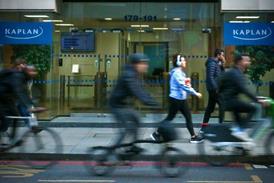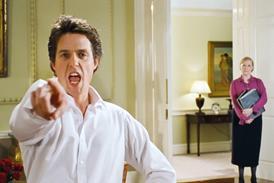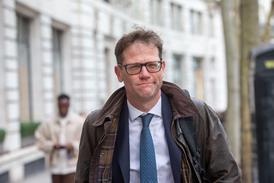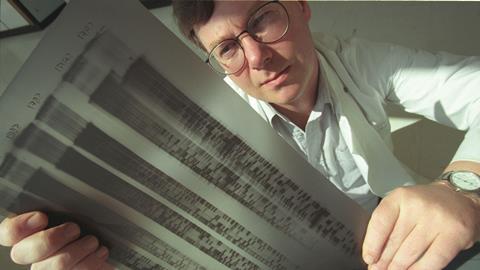Experts and their evidence are under hostile scrutiny amid fears over a decline in standards, reports Grania Langdon-Down.
‘I think people in this country have had enough of experts,’ Michael Gove memorably declared in the run-up to the EU referendum. While his dismissive quip was aimed at economists, experts from arboriculturalists to zoologists play a vital role in the justice system.
But there is an increasingly confrontational approach being taken in both the criminal and civil courts to experts and their evidence, whether it is over challenges to mainstream opinion or areas such as DNA, which is often considered such damning evidence.
In the criminal field, the forensic science regulator Dr Gillian Tully warned recently that a lack of funding to improve standards in forensic science risks jeopardising the integrity of criminal justice.
Concern both in the UK and internationally about the reliability and lack of sufficient scientific basis for some types of forensic science evidence prompted the creation last year of the Leverhulme Research Centre for Forensic Science at the University of Dundee (see box below).
In the personal injury arena, practitioners and experts await the outcome of a Ministry of Justice (MoJ) consultation which could fundamentally change how injured parties are able to seek compensation.
In family, Resolution, the family lawyers’ organisation, is preparing a good practice guide for the conduct of first appointments, including the instruction of experts.
Looking first at the forensic world, Dr Tully says that the biggest single challenge in ensuring the quality of forensic science and forensic pathology in the criminal justice system is ‘financial’.
And she warns that, unless funding is increased to a sustainable level across the board, and particularly for defence provision through legal aid, there will be quality failures and a loss of confidence in forensic science.
Lack of resources means police units and smaller providers are struggling to meet the required standards set by the regulator. These include the digital forensic standard (by October this year), the fingerprint comparison standard (by October next year), and the crime scene investigations standard by 2020.
These standards, she stresses, are ‘not some unachievable “gold-plated” ideal; they are the minimum standards expected of any reliable forensic science organisation’.
Failure to be compliant could have huge consequences for trials, because the criminal procedure rules require that anything that could detract from the credibility of a witness or the reliability of results must be declared.
She says: ‘I interpret that as meaning you will have to declare if you haven’t complied with the standards, so the courts will be able to make a robust determination whether the evidence is reliable. I am working with the Crown Prosecution Service over disclosure of non-compliance, because this could significantly detract from the credibility of a forensic science expert witness.’
Dr Tully acknowledges it is a struggle for smaller companies to meet the standards in an unstable market, with some reporting that their income from legal aid work has dropped over the last three years by 20%-25%. Finding an extra overhead of around 15% to become compliant means the sums just do not add up and risks them being priced out of the market, she says.
So, rather than press for an across-the-board increase in legal aid fees, Dr Tully wants the Legal Aid Agency to develop a system that supports those with accreditation to ensure they have a level playing field – if not a competitive advantage.
She is also determined to keep pressing the government to honour its commitment to give her clear statutory powers to tackle a ‘hard core’ of about 20% of the market who, she says, will only comply with the standards if compelled to do so.
Over the coming year, she wants to pilot more standards, including one to ensure the quality of work done for the defence.
Duty solicitors at police stations are being presented with information that ‘we have a DNA match between your client and the scene’, she says. ‘Do those solicitors know what that means, what it doesn’t mean, what the strengths and limitations are? I am not sure they do. Do they have the expertise to know when to raise issues with the prosecution’s streamlined forensic reports?
‘We need a standard that gives defence practitioners confidence that those they instruct aren’t “guns for hire” without much expertise but are good, solid forensic scientists who are making independently minded assessments of the evidence.’
Many of the people offering this service are very good, she notes, adding: ‘I know some of them personally. But there is currently no way for a court or a defence solicitor to know who is a really good defence expert and who is on the edge of being a charlatan.’
She also wants to develop a standard for interpreting results, so there is a framework enabling scientists to use scientific methods appropriately and robustly, but that also informs the court about any uncertainties around the findings.
Another top priority, Dr Tully says, is to prevent the risk of DNA contamination in sexual assault referral centres (SARCs) and policy custody suites. In one case, the DNA recovered from one complainant examined at a SARC was detected on the intimate swabs from another complainant examined at the same facility.
With so much at stake, her message to practitioners is: ‘Make sure that you understand the quality and limitations of what is being done. Ask questions about accreditation – are the people you are instructing compliant with the required standards? Are they using the right equipment and properly validated methods?’
The stakes are also high for the experts who are putting their professional reputations on the line. With the potential to be sued for negligence following Jones v Kaney, other recent challenges to experts could have a chilling effect on those considering whether to take on or continue with the role.
In one high-profile case, Dr Waney Squier, who gave evidence in criminal trials involving shaken baby syndrome, was banned from practising after the Medical Practitioners Tribunal found she had given misleading evidence.
Sitting in the High Court last November, Mr Justice Mitting overturned the decision, saying it was flawed because her views were not misleading and were ‘genuinely held’. However, he said she had failed to work ‘within the limits of her competence, to be objective and unbiased and pay due regard to the views of other experts’. He imposed conditions on her registration so she cannot give expert evidence again for three years, subject to review.
The General Medical Council said the judgment confirmed the case was not about the rights and wrongs of the scientific evidence but how she gave it.
Squier has called for a public inquiry into how SBS is being used in court.
However, human rights lawyer Clive Stafford-Smith argued it was a ‘witch hunt’ that could discourage experts from challenging established dogmas.
‘From what I understand,’ he says, ‘it is now virtually impossible for the defence in shaken baby cases to find an expert in Britain willing to appear to contest the theory – which is an unproven and, in my view, false theory – that shaking causes the “triad” of observed symptoms.
‘This means that the flat-earth society views of those willing to promote this theory will put people in prison, or deprive them of custody of their children, without meaningful testing.’
He pointed to the reversal of opinion in the US over forensic hair analysis which was the basis for several capital cases. The FBI has now accepted that the interpretation of the results was, in many cases, fatally flawed.
‘Confronting dogma is a risky business and this case could have a chilling effect on the supply of experts willing to do so,’ agrees Chris Pamplin, editor of the UK Register of Expert Witnesses.
So, what lessons should experts take from this case? ‘First, experts are under a duty to present the range of opinions that exist in a field,’ he explains. ‘It simply isn’t safe to ignore the majority position just because you think it is flawed.
‘Second, when challenging the majority, you can expect to face strong resistance, and one easy way to neutralise your challenge is for the other side to “play the man, not the ball”. Your expert witness practice, the way you write reports and how you give evidence must be exemplary if you wish to avoid giving others easy sticks with which to beat you.’
Boffins unpick courtroom DNA
The first challenge for the Leverhulme Research Centre for Forensic Science is to see if it can design a ‘black box’ that will unmix the profiles discovered in a complex DNA sample with a degree of accuracy acceptable to the courts.
The work is just the start of an exciting programme of innovation at the centre, which was opened last summer by the Queen having been established with a £10m award from the Leverhulme Trust – the largest research grant ever given to an academic forensic science institution.
Led by professors Niamh Nic Daéid and Dame Sue Black, it is tasked with investigating what ‘boundaries of certainty’ judges need to reassure them that any scientific evidence put before a jury has a solid scientific footing.
It is also involved in helping prepare primers for judges, practitioners and juries to help them understand the forensic science used in court, with the first two on DNA and gait analysis under way.
‘We are different to other research institutes within forensic science,’ Nic Daéid explains. ‘Both Sue and I are academics but we are also forensic practitioners so we do case work and have experience at the coalface, as well as acting for both the Crown and the defence as expert witnesses.’
Interaction between scientists and the legal community is very limited, she says. But in 2015 senior judges, forensic scientists, academics and practitioners from across the world, as well as government bodies, came together at the Royal Society in London.
‘It was a groundbreaking meeting,’ she notes, ‘which allowed everyone to talk openly about their concerns about the fundamental science underpinning many evidence types presented in court. It has led to a significant step change in the relationship between the judiciary and the forensic science world.’
Work is under way on complex DNA profiles. ‘As DNA testing becomes increasingly sensitive, you can get a complex mix of DNA with more than three people in a single sample,’ the professor says. ‘After analysing it, you end up with three profiles which sit on top of each other.’
It then requires a mathematical equation to unmix those profiles. There are a range of different commercially available algorithms – black boxes – into which the data is put to separate out the different profiles.
Currently, Nic Daéid says, if you put the same data into the different boxes, you will get a range of different answers. If that happens in a case, the court has to be able to find a way of understanding what that means.
‘We are looking at whether we can make a black box that gives us a measurement of the certainty about that unmixing,’ she explains. ‘It may be the answer we find is that the level of error – or boundaries of certainty – are 50%/70% and it may be the courts will decide that isn’t good enough to put in the courtroom.
‘But that is the point of the Leverhulme project – to make those outputs available to the judiciary so they can make a balanced, reasoned decision based on known science, confident that a threshold of admissibility has been reached for a particular type of evidence.’
She says they have identified 40 different types of evidence – from footwear marks, ballistics, alcohol calculations to blood spatter – which are routinely used in courts and face various challenges.
‘We want to work with stakeholders to create an understanding of what we can expect that evidence to deliver. It may be we cannot underpin some evidence, such as bite mark comparison, scientifically.
‘But this isn’t about throwing the baby out with the bathwater. We aren’t saying you shouldn’t use this evidence. But, if the way it is generated or interpreted isn’t fundamentally underpinned by science, then we should call it something else and not imprint on it the authority of science.’ As she points out, forensic science is a ‘corroborative science – it is only one piece of the chain that exists in a case. It might be a strong link or it might not be but, what is absolutely critical is that, as scientists, what we are putting before the court is actually science.’
In the personal injury field, medical experts and practitioners have been watching developments in a whiplash case.
Dr Grace Kerali, a GP and medico-legal expert, voluntarily became an interested party to a county court claim to defend her reputation after allegations were made by the defendant insurer that she had exaggerated medical evidence in hundreds of RTA whiplash claims.
The claimant subsequently discontinued the action and Dr Kerali’s solicitors said she had decided ‘on a commercial basis’ to bring matters to a close by agreeing to pay an interim costs order of £40,000.
The insurer Ageas UK, which was seeking £100,000 in costs, has appealed against the interim order. After the case, the insurer issued a highly critical press release about Dr Kerali.
As the Gazette went to press, Dr Kerali, represented by barrister Mark Engelman of Hardwicke Chambers and solicitor Sandra Campbell of Campbell & Co, had sent a letter of complaint alleging defamation against the author of the press release and those proceedings are continuing. Aegas declined to provide any comment.
Personal injury is a battleground between competing interests as the MoJ consults on raising the small claims limit for all PI claims from £1,000 to £5,000.
Insurers are outspoken about the so-called ‘compensation culture’, while the Law Society and claimant lawyers fear that raising the small claims limit will devastate access to justice, leaving thousands of genuine claimants without legal advice or help in finding and funding expert reports.
The MoJ’s consultation also proposes changes to whiplash claims, which will affect MedCo, the not-for-profit body which sources medical reports in soft-tissue claims on a random basis. Caps on claims could reduce demand but its role could become more important if insurers are banned from making pre-medical offers.
Whiplash claims
MedCo announced in January that it was cutting its annual renewal fees for the next financial year by 23%, thanks to the surplus from 2015. It has yet to decide how to apply the surplus from 2016, which will include some of the non-refundable registration fees of the 134 ‘shell’ companies it suspended in November.
Ministers are to decide whether the right approach is an outright ban on cash compensation for minor whiplash claims or a limit of £425 after studying the various submissions to its consultation. At present, the average payout is £1,850.
Stuart Kightley, head of Osbornes’ PI department and former secretary of the Association of Personal Injury Lawyers, says: ‘The impact on experts is going to be significant. If the MoJ abolishes whiplash claims, Medco goes. If it caps the damages, MedCo stays but claims are likely to drop significantly so experts won’t have much, if any, work. Those individuals who do bring claims will have to navigate the MedCo process and are likely to find the experts want their fee upfront.’
The third scenario is that MedCo is rolled out to other PI areas and higher-value claims because it is ‘cheap and expedient’, he says. ‘That worries me because of the impact the random selection of experts would have on higher-value cases where I think the principle of freedom of choice of experts should be sacrosanct.’
Randomisation is hugely controversial, agrees APIL’s chief executive Deborah Evans. While some members have been pleased with the quality of new medical reporting organisations (MROs) and experts thrown up by the searches, she says ‘randomisation has the potential to skew the market. It doesn’t give any motivation for MROs to improve their offerings because there is no way of improving your market share’.
She also questions whether experts will be able to continue doing reports for £180 if instructed by litigants in person (LiPs) because, unlike lawyers, LiPs are unlikely to be able to compile all the medical records in advance, so the expert will have to start from scratch.
However, Clyde & Co partner Mark Hemsted, who specialises in motor claims and the law, says there are too many ‘intrinsically fraudulent’ claims supported by a ‘broken’ system.
He welcomes the overall thrust of the proposed reforms towards lower-cost claims and, so, fewer claims. But, he warns the MoJ to be ‘mindful of any unintended consequences, which may undermine the anticipated benefits and simply move the problems to other areas’.
He argues the extension of Medco system is attractive – ‘it is easy to implement and prevents phantom rehabilitation and breaking referrer/ provider links.’
When it comes to family, experts’ fees for untangling often global business and jurisdictional issues on divorce, as well as for pre- and post-nups, can run into six or even seven figures.
James Pirrie, director of Family Law in Partnership, is preparing the good practice guide for Resolution. He points to the judgment in SK v TK, where the judge said attempts to reduce the accountancy evidence to one expert rather than two had ironically led to there being three experts.
‘Courts will insist on a single joint expert (SJE) to save costs,’ Pirrie says. ‘But the parties will then appoint their own shadow experts and each side decides for different reasons that the SJE is wrong so lots of time is spent attacking that expert’s opinion.’
Practitioners are asking their shadow experts to draft increasingly detailed questions to establish, for instance, the true cash position of a complex debt structure, as well as determine whether assets, accounts or income streams have been inadvertently – or intentionally – left out of a respondent’s disclosure.
Shadows will also scrutinise the SJE’s valuation report and can end up becoming court-appointed and giving evidence. Given that a 1% difference in a business valuation can alter the assets in the case by hundreds of thousands or sometimes millions of pounds, practitioners say the results justify the extra costs.
Faye Hall, director of forensic services at accountants Smith & Williamson, acts as an SJE and a shadow expert: ‘As an SJE, you are the middleman and, in some respects, without being glib, you know you have the right answer when no one is happy.
‘It is down to you to ask the right questions. You issue your report in final form to both parties and each party will then frame their questions to get the best response they can in their favour. But, as SJE, you have done this mental judging already. Unless new information is provided, you are unlikely to change your view.’
She says parties would prefer to have their own expert from the start. ‘The courts think having an SJE will be cheaper but I wouldn’t always say that is borne out. Shadows tend to work on hourly basis because they have to pick up and drop things as and when issues arise, so there is no way of doing a fee estimate upfront and costs can just accumulate.’
So, which would you prefer to be? ‘A party-appointed expert is a much easier place to be than an SJE,’ she notes. ‘Even though your responsibility is still to the court, you know the legal arguments. The SJE is in a lonelier world – you haven’t got a solicitor to bounce ideas off and you don’t know the legal arguments either side is trying to formulate.’
If the case goes to court, she has seen judges prepared to be much more openly critical in their judgments – ‘not just on your report but also your performance in the witness box. Giving evidence can feel like you are taking an exam and training is vital. You can’t have an expert who is brilliant on paper but falls apart in the witness box’.
Looking ahead, Amanda Stevens, a governor of the Expert Witness Institute, says the sea change expected in civil litigation cost recovery over the next year means experts will have to ‘rethink the price they charge, who they take instructions from and what type of work they wish to do if they want their expert work to be commercially successful, especially in claims where damages are likely to be valued at below £250k’.
Practitioners must also be on their toes, says Mark Solon, founder of Bond Solon Training. ‘Early and complete instructions are a must,’ he says. ‘Now experts are potentially liable in both contract and negligence for the opinion proffered, solicitors could be in the frame if their instructions are late or inadequate.
‘Solicitors must also make sure there are properly agreed terms and conditions at the outset to avoid tears later if, for example, the matter settles and the expert has set aside time to give oral evidence or if payment is later than the expert anticipated.’
What is clear is that there will many challenges ahead for experts and their instructing solicitors. As Family Division president Sir James Munby has stressed: ‘The problem does not lie with the experts themselves. It lies in the use we make of them.’
Grania Langdon-Down is a freelance journalist

















![David Lester (senior partner at Blythe Liggins), Darryl Barnes, Jagdeep Sandher (head of dispute resolution at Blythe Liggins)[4]](https://d1d8vslyhr7rdg.cloudfront.net/Pictures/274x183/4/2/8/116428_davidlesterseniorpartneratblytheligginsdarrylbarnesjagdeepsandherheadofdisputeresolutionatblytheliggins4_981603_crop.jpg)









2 Readers' comments